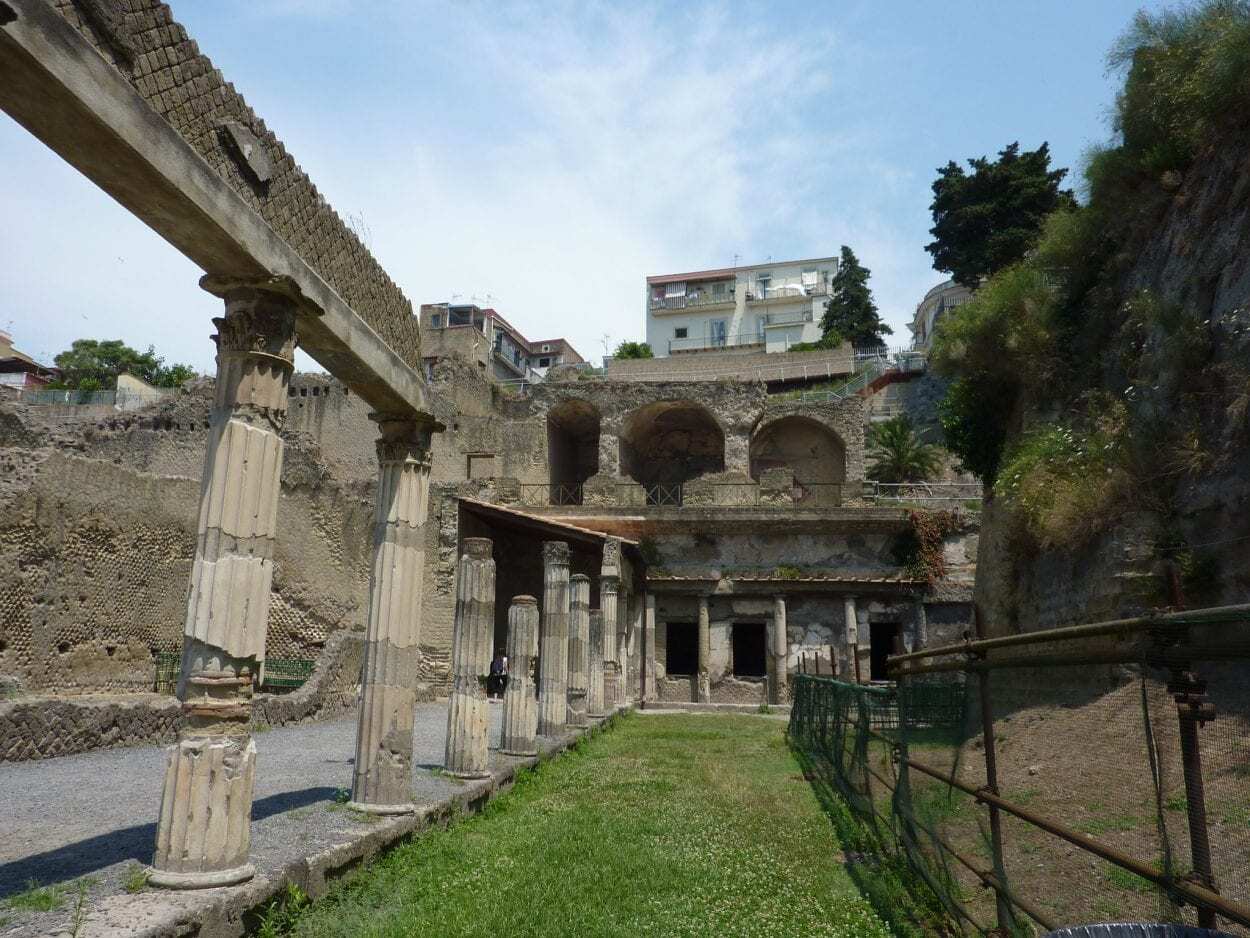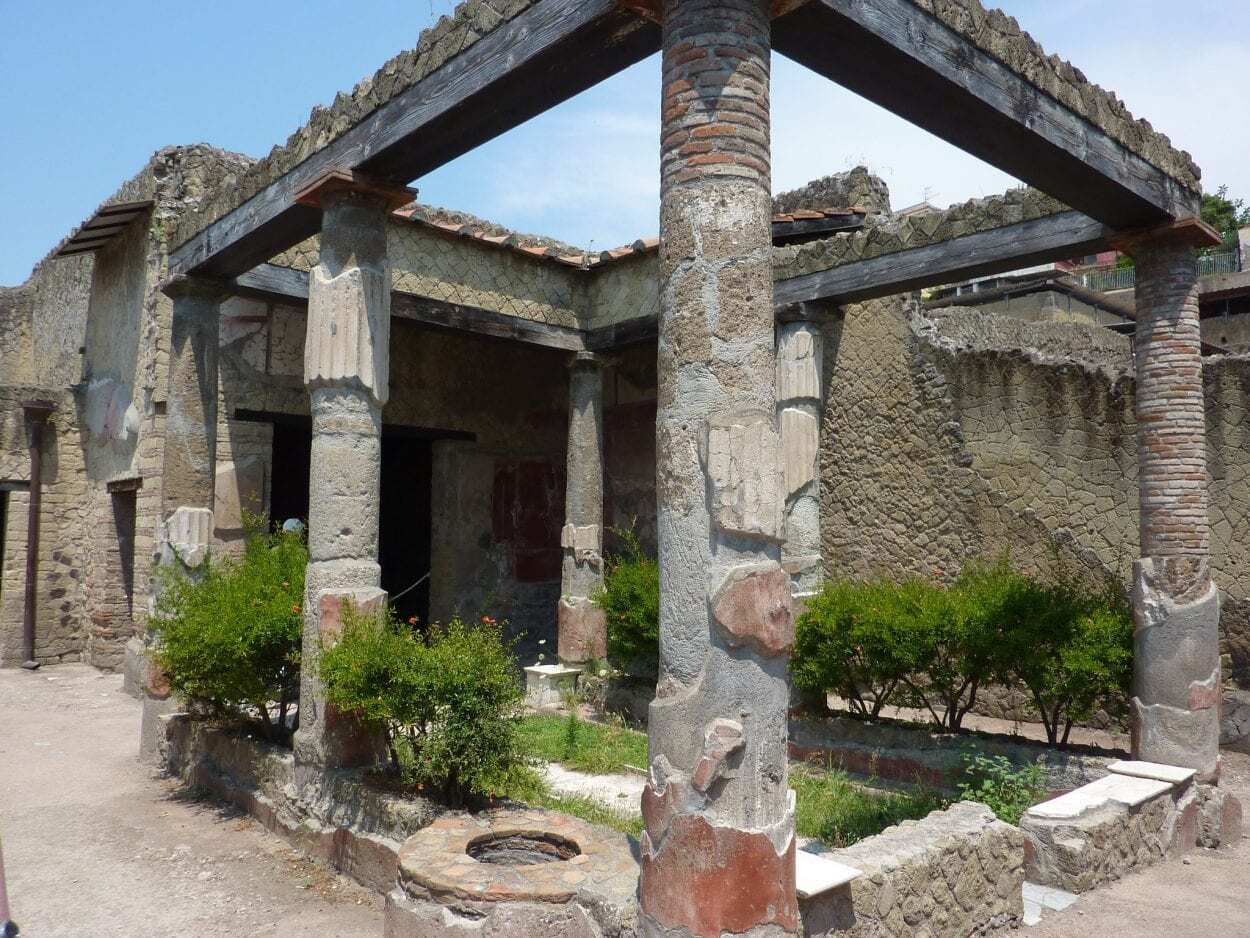Herculaneum is an archaeological site and ancient Roman town, located in the present-day comune of Ercolano in South-West Italy.
Like the nearby city of Pompeii, Herculaneum was destroyed during the volcanic eruption of Mount Vesuvius in AD 79, burying the town under thick layers of ash and pumice.
According to the Greek historian Strabo, the first settlers of Herculaneum were the Osci, an Italic people who spoke the Oscan language and inhabited the modern region of Campania.
The town later came under the control of the Greeks (renamed Heraklion) and functioned as a trading post for ships in the Gulf of Naples.

By the 4th century BC, the town was controlled by the Samnites (historically a confederation of Italic tribes) who were eventually assimilated into the Roman Republic, with Herculaneum becoming a Roman municipium in 89 BC as a seaside retreat for the Roman elite.
The town consisted of a classical street layout, separated into blocks (insulae) that was defined by the intersection of the east–west (cardi) and north–south (decumani) streets. Major public buildings included a Central Thermae (bath houses), forum, temples, theatre, and various high-status villa complexes and dwellings.
Based on letters by Pliny the Younger (a lawyer, author, and magistrate of Rome), Mount Vesuvius began erupting at around 1:00 pm, which scientists predict would have released a deadly cloud of super-heated tephra and gases to a height of 33 km (21 mi), ejecting molten rock, pulverized pumice, and hot ash at 1.5 million tons per second, ultimately releasing 100,000 times the thermal energy of the Hiroshima-Nagasaki bombings.

The initial prevailing winds blew to the southeast, causing volcanic material to fall on the city of Pompeii and the surrounding countryside, but leaving Herculaneum relatively unscathed during the first phase of the eruption.
The following day, pyroclastic surges (consisting of a super-heated mixture of ash and hot gases) struck Herculaneum, burying the town in thick pyroclastic material, preserving the structures in situ and carbonising organic materials.
The town was supposedly rediscovered when wells excavated into the volcanic material revealed ancient statues and works of art. This resulted in Prince d’Elbeuf purchasing land in 1709 in search of statues that led to the discovery of the town’s theatre.
Major excavations continued throughout the 18th, 19th and 20th century, with ongoing excavations and preservation works ongoing to the present day.
Header Image Credit : Xtreambar – CC BY-SA 3.0





